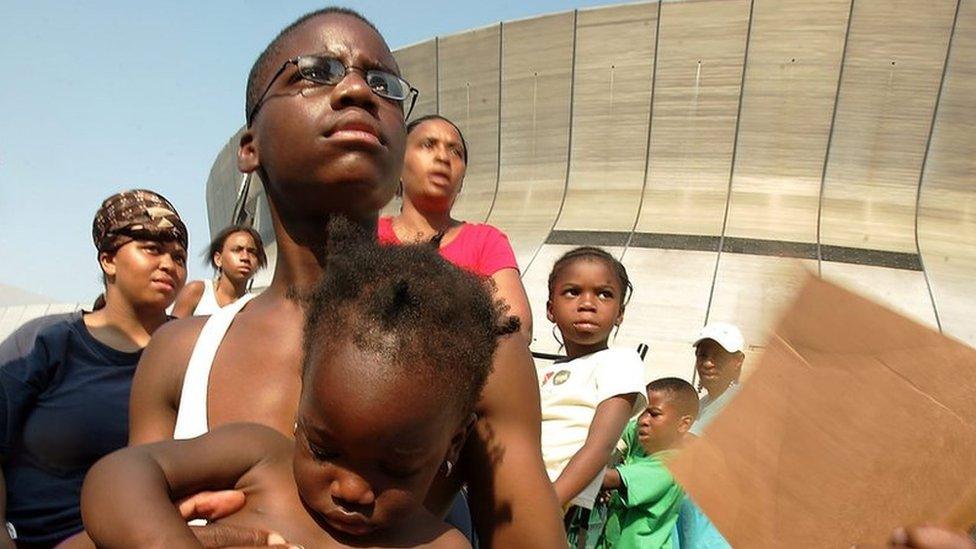In the path of a Houston reservoir near breaking point
- Published
Watch local volunteers stepping up to help with search and rescue missions in Houston
As the rain began to fall harder on Bear Creek Village on Tuesday, Leticia Lopez and her husband Edgar Fernandez huddled under an awning, pausing for a cigarette and a final look down the street in the direction of their house.
The couple had abandoned the house in the middle of the night as the water rose over their shoulders and the floorboards floated loose. In the morning they waded back in to rescue some photographs. Nothing else could be salvaged.
"Some of the people in those pictures are not even with us anymore, those are our memories," said Ms Lopez, 32. They had already sent their two young daughters to Ms Lopez's mother, on higher ground.
"They're safe," Mr Fernandez said. "But we've lost every material possession we owned."
Their house, on Rippling Water Drive, was one of thousands in the area that flooded on Monday as Hurricane Harvey dumped record rainfall on Houston and the nearby Addicks reservoir filled beyond capacity for the first time in its 70-year history.
As the level in the reservoir rose past its 108ft (33m) limit, water began pouring over an emergency spillway. Fearing the dam around the reservoir would fail, the Army Corps of Engineers began to let out 4,000 cubic feet (113 cubic metres) of water per second into Buffalo Bayou, flooding nearby neighbourhoods including Bear Creek.
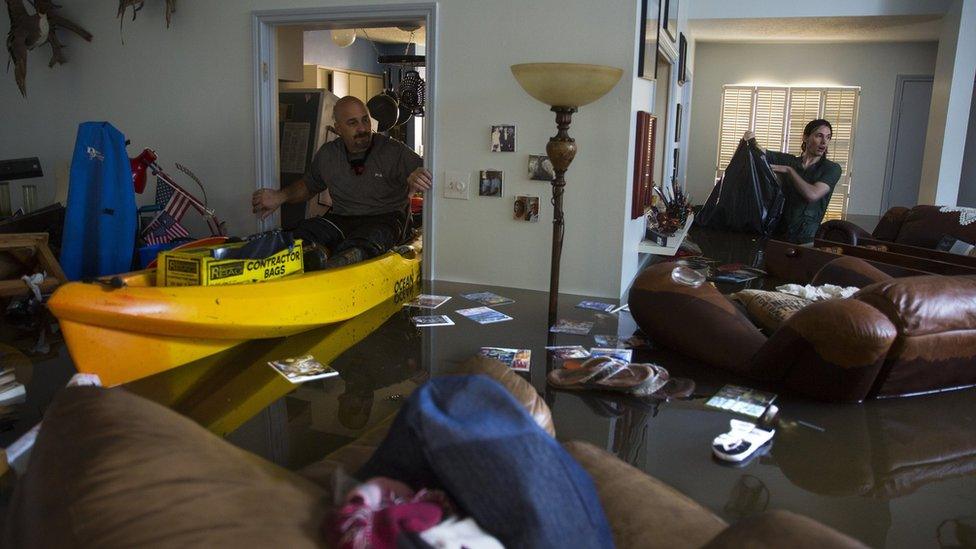
"The flooding here is not just from the rain, the flooding here is because they released the reservoir," Ms Lopez said.
"They notified us they would do it at 7pm and at 1am they released the water. We didn't have enough time. Now everything is gone. If you walk down to my house now, all you will find is a wreck."
Mr Fernandez flicked away his cigarette and, after a final glance towards the house, the couple got in their truck and made their way to Ms Lopez's brother's house.
There were just a handful of residents left on Rippling Water Drive on Tuesday morning. An eerie silence had descended over the worst-affected parts of Bear Creek, punctuated only by sporadic calls from volunteer rescue boats and the chop of a military helicopter making low passes overhead.
As the water level rose, there were fears that a torrent would wash through. The Addicks and Barker reservoirs, built by the government in the 1940s to hold back excessive rainwater along the bayou, store more than half a billion cubic metres of water between them, and the US Army Corps of Engineers has rated the decaying dams around the reservoirs as "extremely high risk".
The flooding in the surrounding neighbourhoods would last at least four to five weeks, warned Jeff Lindner, a meteorologist at the Harris County Flood Control District. On Tuesday he advised anyone still there to get out. "Once the water comes into the street, you aren't going to be able to leave," he said.
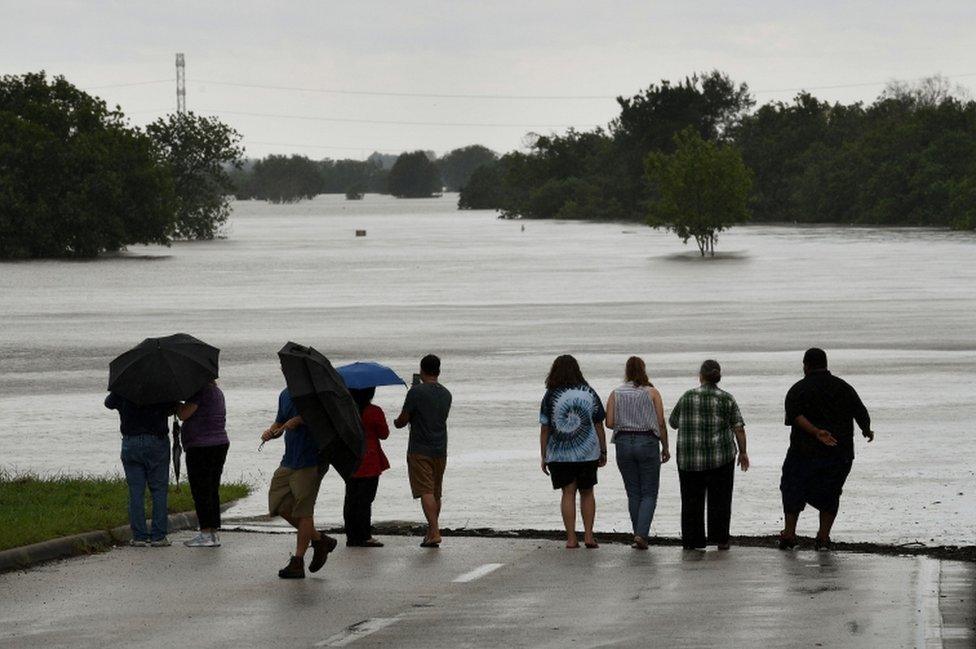
Residents check the water level of the Barker reservoir
In the Colonies neighbourhoods, just streets away from where water flows from the reservoirs into the bayou, a volunteer army had brought together jeeps, pick-up trucks and military surplus vehicles to rescue stranded residents. Organised on Facebook by two local off-road recovery groups, and manned from a makeshift radio control centre a few miles away, the group scoured the flooded streets for anyone stuck in their home.
Josh James, 26, waded through chest-high water to get people onto a truck.
He helped Christie Mueck and her husband out of their house with their dog. Newlyweds, the couple moved to the neighbourhood just two months ago from Layfayette, Louisiana.
"I have five years of research in that house," said Ms Mueck, holding back tears. "Everything's in there. If it washes away, I won't get my PhD."
With 12 evacuees and five dogs, and its huge wheels completely submerged, the truck began to make its way back to higher ground. It was one of six being operated by the volunteers in the area, Mr James said, along with 40 boats and a host of smaller off-road vehicles.
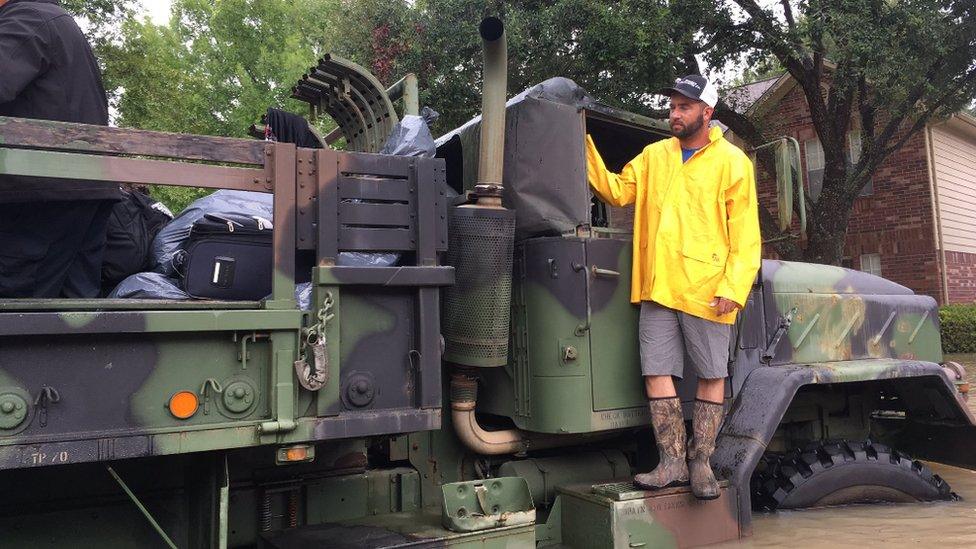
All around the Addicks reservoir, volunteers were out in the water, some well-equipped and tightly organised, others making use of whatever they had to hand. With no work while the nearly oilfield is closed, Anthony Kacala, Bertley Taylor, and Michael Hernandez grabbed a canoe and a rubber dinghy and searched online for trouble spots.
The three friends rescued 12 people from flooded homes nearby on Monday night, they said, before loading up Facebook to check where else they might be needed.
On another street nearby, Octavio Zambrano, 27, was driving his military surplus jeep around with three friends, offering help to anyone in need. Brian Foreman, 34, came in a boat to rescue his father, then stuck around to help, ferrying a woman back to her house to retrieve medicines and clothes.
The fleet of volunteer rescue vehicles went in and out of the worst-affected areas, searching for anyone left behind. The truck containing the Muecks slowly made its way to a staging area. The couple said they would try to connect with family members, or else join the nearly 20,000 people around the city preparing to spend the night in a shelter.
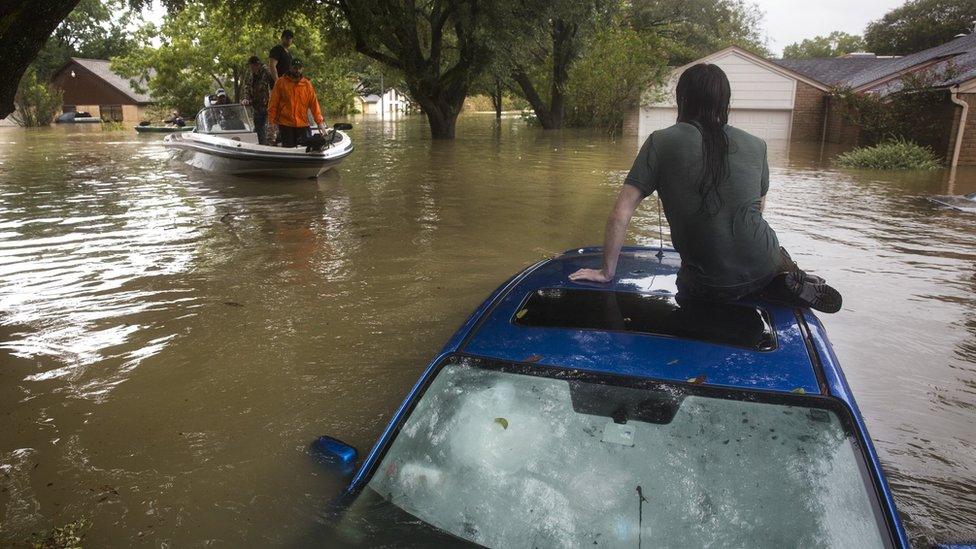
As water began pouring out of the Addicks reservoir on Monday, two local schools were transformed into makeshift shelters. By that night they were full and began turning people away.
Some 1,100 people had crammed into Morton Ranch High School, bedding down along the corridors and in the canteen. The handful of inflatable beds available were given to the elderly and the sick, everyone else slept as best they could on the floor.
Sat at a canteen table on Tuesday, looking shattered, Latonia Buckley held her two infant daughters in her arms. Twenty-four hours earlier, she had put the two girls onto a mattress and floated them out of the house as the water poured in.
The family had one more night available at the shelter, then they would have to leave. With her home wrecked, and more water threatening to spill from the reservoir into the neighbourhood, going home was not an option.
"We have nowhere else to go, we are facing sleeping in our car tomorrow night," she said. "When we opened the car door earlier, water poured out."
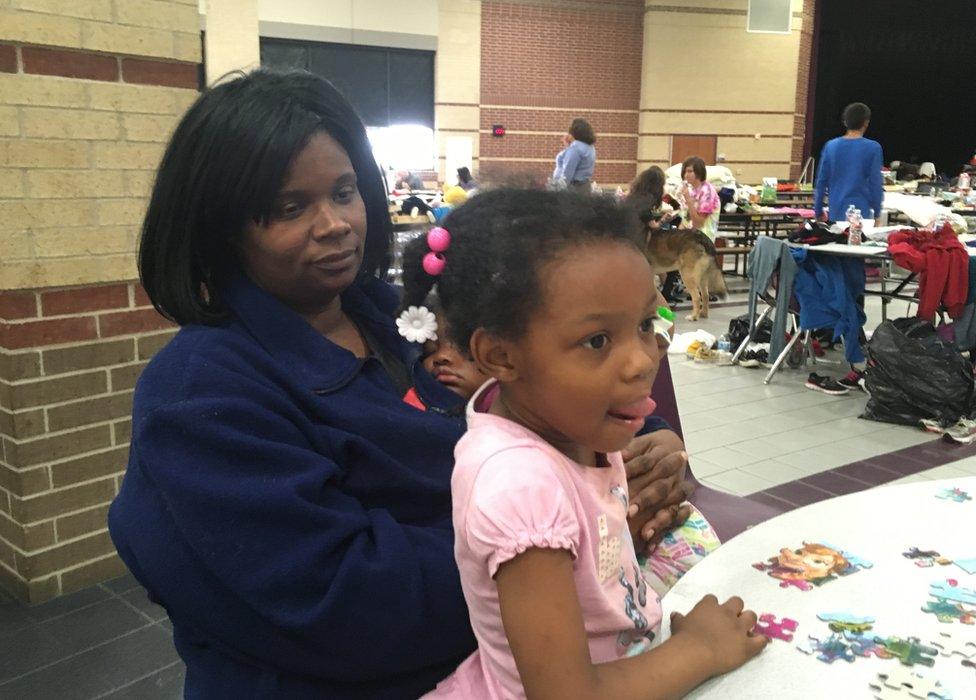
Like many people making a makeshift home at the school, Ms Buckley had no flood insurance. "It's devastating," she said. "You can't protect your kids, you can't provide for your kids. It's doesn't matter what you have in the bank, you have nowhere to go."
Despite the releases on Monday, water was still pouring over the Addicks reservoir spillway at an uncontrolled rate on Tuesday evening. At the Barker reservoir, the water level was rising and threatening to spill over.
"We just don't know exactly how this is going to play out because its never happened before," said meteorologist Mr Lindner.
The most difficult question for many of those bedding down at Morton Ranch High School for a second night seemed to be one of the most simple: What next?
"I really don't know," said Ms Buckley. "Pray, I guess."
- Published29 August 2017

- Published29 August 2017
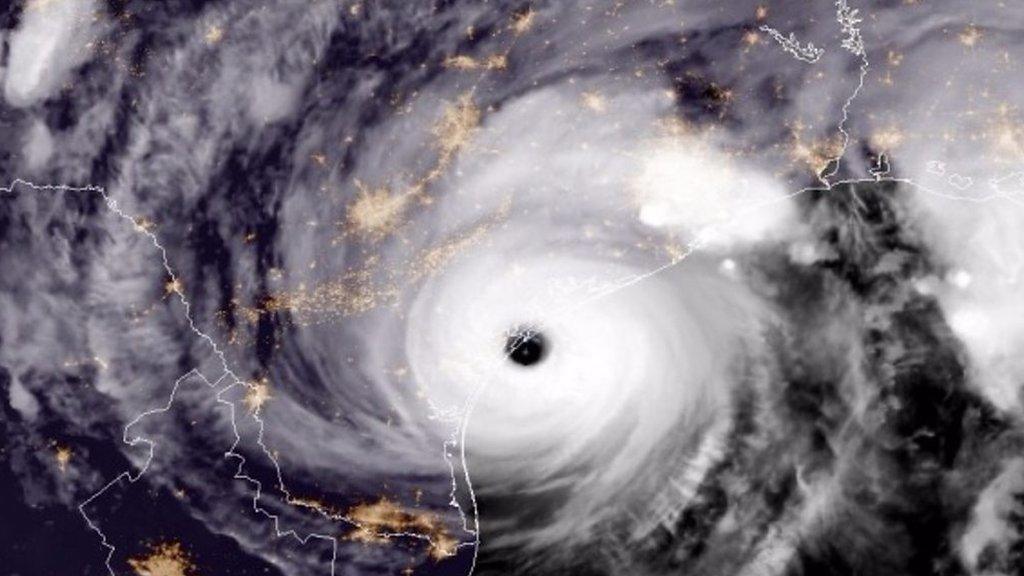
- Published29 August 2017
- Published28 August 2017
